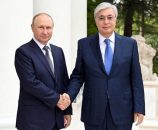According to data released by the Stockholm International Peace Research Institute (SIPRI) yesterday, total global military expenditure rose to $1917 billion in 2019, which represents an increase of 3.6 per cent from 2018 and the largest annual growth in spending since 2010. The five largest spenders in 2019, which accounted for 62 per cent of expenditure, were the United States, China, India, Russia and Saudi Arabia. This is the first time that two Asian states have featured among the top three military spenders. India has superseded Saudi Arabia, and jumped to third position in global military spending. “Global military expenditure was 7.2 per cent higher in 2019 than it as in 2010, showing a trend that military spending growth has accelerated in recent years,’ says Dr. Nan Tian, SIPRI Researcher. In 2019 China and India were, respectively, the second- and third-largest military spenders in the world.
China’s military expenditure reached $261 billion in 2019, a 5.1 per cent increase compared with 2018, while India’s grew by 6.8 per cent to $71.1 billion. In addition to China and India, Japan ($47.6 billion) and South Korea ($43.9 billion) were the largest military spenders in Asia and Oceania. Military expenditure in the region has risen every year since at least 1989. Germany’s military spending rose by 10 per cent in 2019, to $49.3 billion. This was the largest increase in spending among the top 15 military spenders in 2019. At the same time, however, military spending by France and the United Kingdom remained relatively stable. One would not understand as to how India could spend enormous sum on defence when its economy has collapsed, unemployment is rampant and more and more people are being pushed below the poverty line.
According to a new report released in 2016 by London based Information Handling Service (IHS Markit) based on Jane’s Annual Defence Budget report, India was poised to spend billions of dollars over the next decade. India spent more than $50 billion on its military might in 2016, replacing Russia out of the top five biggest spenders, and by 2018. India was also tipped to take a third spot by 2018 surpassing UK’s spending on arms. Since coming to power in May 2014, Modi government has ramped up the country’s defence facilities. In 2014, India purchased $5.57 billion worth of arms, ammunition, and defence-related goods from abroad. Earlier this year, India also signed a €7.8-billion (around Rs.58,000 crores) deal to buy 36 Rafale fighter jets from France . India intends to spend some $130 billion to modernize its military over the next seven years.
The Indian Army had announced Cold Start as a concept in the spring of 2004, with the primary goal being to allow for Indian conventional strikes against Pakistan under the threshold of nuclear escalation. The concept reportedly sought to revise India’s sluggish mobilization times to enable smaller, more agile units to swiftly thrust into Pakistan-controlled territory and gain control. Cold Start is the name given to a limited-war strategy designed to seize Pakistani territory swiftly without, in theory, risking a nuclear conflict. According to the Economist report, “Rawat’s recent recognition of the doctrine’s existence provides further reason for Pakistan to develop tactical nukes. The risk of overreaction on Pakistan’s side is heightened by India’s continued obfuscation about what exactly the concept means, making the whole premise seem misguided. Indeed, Pakistani officials have already threatened to use nuclear weapons, should India put Cold Start into action.”
Indian nuclear and missile program in the wake of unbridled quest for regional hegemony is indeed a threat to regional peace. The ongoing developments from Indian side like pronouncement of offensive military doctrine, massive acquisition of conventional weapons, expansion of strategic assets, and introduction of Anti-Ballistic Ballistic Missile Systems would upset the strategic balance in South Asia. These advances when seen in conjunction with irresponsible rhetoric from Indian leadership, coupled with aggression on the Line of Control, Working Boundary and violation of Exclusive Economic Zone by its submarine, are highly worrisome and have to be factored in our security calculus. The India-Pakistan nuclear dynamic leads to the conclusion that massive retaliation fails to serve the stated objective of nuclear deterrence, as there is no concept of victor and vanquished in a war between two nuclear states, as it would result in colossal death and destruction on both sides.



